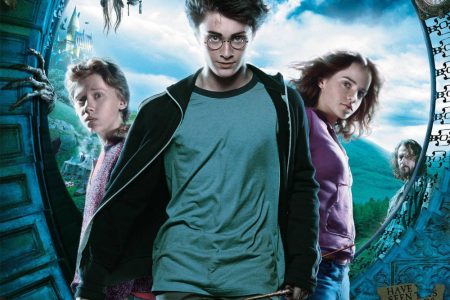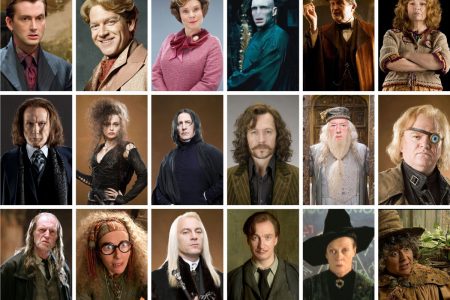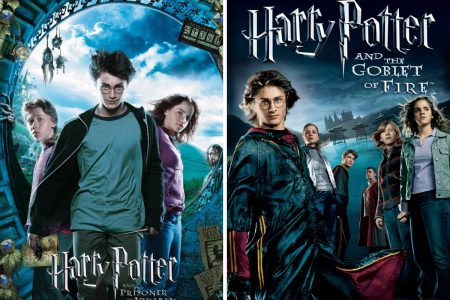I love the Lego games and I love the Harry Potter books and films, so I knew in advance that I was going to love Lego Harry Potter Years 1–4. And it didn’t disappoint. If you enjoy the films and enjoy the cuteness and humour that Travellers Tales bring to their execution of a fun game, you will pass the time very happily indeed.
The game is based on the first four films (specifically the films and the way they move through the stories, and not the books, although there are some book-specific references – the Sphinx in the maze of the Triwizard Cup doesn’t appear in the films but is present in the game, and Rita Skeeter can turn into a beetle), splitting each film into different levels with six sections for each. The really good aspect to this is that there is a real synthesis of game and story: in a game, you have to learn the techniques before you can use them, and the structure of the stories involves progressing through school lessons, meaning a natural way to pick up new spells. This means that you start with a basic spell that disrupts items so you can pick up Lego studs, but you have to wait until your first lesson before you learn Wingardium Leviosa, the basic levitating spell that recognises elements to be moved with a purple glow around them. This is another aspect where the magic of Harry Potter blends more naturally with the world of the Lego games: building items you need to solve a puzzle or progress in a game is more understandable when magic is involved; having Indiana Jones or Han Solo or Batman physically building objects is rather silly, if endearing.
The story games progress through aspects of the plot, with ‘in between’ sections providing more room for game mechanics. For example, the Death Eaters at the Quidditch World Cup is not a huge section in the film, but is a whole section in the game, wondering around the area, saving wizards, putting out fires, saving Weasleys and fighting Death Eaters. The further you progress, the more you acquire that will help in the game: Harry gets the Invisibility Cloak, Hermione gets Crookshanks in the third year when Ron loses Scabbers (small animals can be controlled to move through pipes – you can even unlock Neville with Trevor the toad), Expelliarmus is acquired in the second year, Ron and Hermione learn Ridikulus in the third year while Harry learns Expecto Patronum, and it is only in the fourth year that you final learn Reducto, which will blast metal and thus unlock many more secrets.
It is the secrets that really open up the game: having unlocked Free Play by completing each level, you can go in as different characters (a recommendation: unlock a character who uses Dark Magic early on in proceedings, because there are lots of sections that require this, where objects have a red glow around them) and need the full range of spells to complete the game successfully. There is a lot to do: there are Students In Peril to free (you get nice music when you help them in the game, and a rousing cheer when it is noted at the end of the level), 167 (!) characters to unlock (they really do include everyone from the film, even the Masons from the second film, who don’t even get to speak, although there are many differently clothed versions of the main characters and other significant players), the four pieces of the Hogwarts crest to find in each level and random gold bricks to locate.
In addition to the game levels, there is the whole of Hogwarts to explore – it is a huge expansive level in its own right, and a delight. In the game sections, you are guided to each level by Nearly Headless Nick, but you can roam about to all parts of the grounds (with the exception of the Room of Requirement, which is only discovered in the fifth year), discovering sections and unlocking characters, while there are some nice moments in the background – in a quadrangle where you have to unlock a few things, Professor Moody transforms Draco Malfoy into a ferret before Professor McGonagall reverses the spell. You can go to the Owlery (where you can unlock Cho Chang, which is appropriate for the film version), the lake, the classrooms, the toilets, the headmaster’s office, all of the House common rooms (which have several rooms within them) when you have unlocked characters from each House – there are even sections that are unexpected, such as a basement under Professor Flitwick’s classroom, or what looks like the classroom for Muggle Studies. There are also sections where you enter the same classroom at different times of the day or night, and there is a very clever use of the Timeturner (which Hermione picks up in the third year) to transport you to a secret area by sending you back in time in the same area.
The charm of the game lies in the details – apart from the cheeky cut scenes that play around with the story and characters in an affectionate way, there is the cuteness of a baby dragon, the adorable way in which you can transform Professor Lupin into a werewolf (with accompanying howl), the attacking spells you can use on just about anyone (except the ever-vigilant Professor Moody) that increase the size of people’s head or reduce it or cause their hair to turn ginger or into some flowers, an unlockable version of Moaning Myrtle in a swimsuit, or playing xylophones to a dragon to send it to sleep. Just the fact that outside Hogwarts it is raining most of the time is a nice touch. Another charming element is the use of music and sound effects from the film: the main themes accompany all sections, and it’s extremely pleasing to produce a patronus and hear the same satisfying noise before it hits a Dementor. There is also fun when you play different characters, with specific talents: Dumbledore can get in any room in Hogwarts or Lupin as a werewolf can both dig and is very strong.
With all the positives to the game, there is a negative: it is perhaps the most glitch-ridden game I’ve ever played. Apart from the many times when the game would freeze in the middle of a level, thus losing all the work, there are little glitches throughout, like the Red Brick Detector pointing down a stairway that is impossible to actually reach and turns out to be incorrect anyway, or when characters walk past Mandrakes that have been potted but move slowly as if they are still making a noise (Mandrakes screeching is used to smash glass in the game, but you can unlock the ability to change the screeching to singing, which is much more beautiful). I don’t know if it’s a glitch, but levitating Lego bricks to create things to jump up or across sections was really annoying, not finding the correct piece to move or not locking into place correctly, and proved extremely frustrating. The worst glitch involves the basement under Flitwick’s classroom – the first time we played, it didn’t recognise the attempted exit, which would see you jump high back into the classroom above and the door close, and so it kept throwing us back down into the basement, repeating it over and over again until it finally recognised what we were doing. Very annoying.
Fortunately, the glitches are not sufficient to overcome the enjoyment of this game. The Bonus levels you unlock through the game are very similar to the equally silly Bonus levels unlocked in the second Indiana Jones Lego game, and seem equally out of place here; and the final bonus level where you are Voldemort and a Death Eater destroying Lego London seems a really bizarre choice for the last memory of the game. However, this game is such infectious fun that we started playing it all over again almost immediately. Doing Lego magic in Hogwarts, the Forbidden Forest, the Burrows, Diagon and Knockturn Alleys, blowing up stuff, making objects fly around in a flurry of magic, using Polyjuice Potion to turn into a character you’ve unlocked – who wouldn’t want to do that all again?




